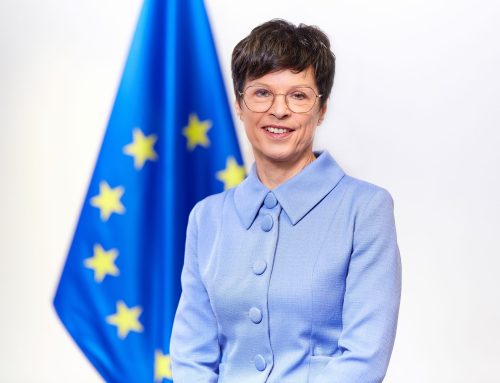The study focuses on six European cities, chosen for the multinational composition of their population : Barcelona, Dublin, Hamburg, Lille, Prague and Turin. It shows that for all six cities the inflow of younger, working age EU citizens has had a positive economic impact. The study also shows that newcomers have helped fill gaps in local labour markets, contributed to growth in new sectors and have helped balance out ageing populations. It finds that mobile citizens are often overqualified for the jobs they take up, may be paid less and at the same time do not always benefit from the same access to housing and education.
EU citizens go to other EU countries mainly for job opportunities and are on average younger and more likely to be working. This is confirmed by a new, independent study on the impact of the right to move freely within the EU which was published today. The study focuses on six European cities, chosen for the multinational composition of their population (see Annex 1-2): Barcelona, Dublin, Hamburg, Lille, Prague and Turin. It shows that for all six cities the inflow of younger, working age EU citizens has had a positive economic impact. For example in Turin, a local evaluation shows that tax revenues from foreigners on the whole brought a net benefit of 1.5 billion € to national public finances (see Annex 3). The study also shows that newcomers have helped fill gaps in local labour markets, contributed to growth in new sectors and have helped balance out ageing populations. It finds that mobile citizens are often overqualified for the jobs they take up, may be paid less and at the same time do not always benefit from the same access to housing and education.
“Free movement is a benefit for Europe, its citizens and its economies. There can indeed be challenges in some cities which need to be addressed. It would, however, be the wrong response to question the right to free movement. I believe we need to work together – at European, national and local level – to turn challenges into opportunities. These examples from the cities of Barcelona, Dublin, Hamburg, Lille, Prague and Turin show that it can be done,” said Vice-President Viviane Reding, the EU’s Commissioner for Justice, Fundamental Rights and Citizenship when speaking at a mayors’ conference on free movement taking place today (IP/14/98). “You can count on the Commission to continue assisting Member States in confronting any challenges linked to free movement. Today’s meeting with mayors will help local authorities from around Europe draw on the best examples of successful policies of integrating EU citizens into cities, to everyone’s benefit. I look forward to seeing such good practices being rolled out Europe-wide.”
The main findings of the study are:
- EU citizens move mainly because of job opportunities and are, on average, younger and more economically active than the local population in the cities examined (see Annex 4);
- The inflow of younger, working age EU citizens in the selected cities is helping to address the demographic challenges of an ageing population and a shrinking labour force;
- They are also helping to fill gaps in the labour market, either taking up mainly low-skilled jobs (Turin and Hamburg), contributing to growth of new sectors (such as ICT in Dublin), or helping create new business ventures (as in Turin and Hamburg).
The study also outlines the following challenges:
- Mobile citizens are more likely to be overqualified than nationals (taking up jobs below their qualification) which could imply a wasting of skills, mitigating the potential benefits of intra-EU mobility;
- Wage differentials emerged in some cases between nationals and mobile EU citizens (who most often earn less), although evidence is quite limited;
- Mobile citizens do not always benefit from the same opportunities in terms of housing and inclusion of children in schools, although they work and pay taxes.
The success of the integration programmes in place in the six cities is evidenced by the fact that attitudes towards mobility are gradually improving (see Annex 5). All the cities examined are promoting an inclusive environment and a welcoming culture, through policies such as accessible information (one-stop shop information services for example); support for language learning; and intercultural dialogue and interaction among citizens.
Finally, the study identifies a series of best practices from the cities examined (see Annex 6).
Background
The study was presented at a meeting today with more than 100 mayors and representatives of local authorities from around Europe who met to discuss current challenges and opportunities to do with the free movement of EU citizens in the European Union. The Conference of mayors is designed to help local authorities share best practices in implementing free movement rules and tackling social inclusion challenges. The meeting is one of five actions presented by the Commission to strengthen the right to free movement in the EU, while helping Member States to reap the positive benefits it brings (IP/13/1151).
The study analyses policies aimed at economic and social inclusion of EU mobile citizens, and at promoting a welcome culture and a positive attitude towards foreign nationals. It considered policies in the field of employment, entrepreneurship, housing, education, inter-cultural dialogue, attitudes towards migration and participation in city life.
For more information
Study: Evaluation of the impact of the free movement of EU citizens at local level:
http://ec.europa.eu/justice/citizen/files/dg_just_eva_free_mov_final_report_27.01.14.pdf
Annex to the Study: Good practices from six cities:
http://ec.europa.eu/justice/citizen/files/best_practices.pdf
Frequently Asked questions – Free Movement explained:
http://europa.eu/rapid/press-release_MEMO-14-9_en.htm
European Commission – Free movement
http://ec.europa.eu/justice/citizen/move-live/index_en.htm
Homepage of Vice-President Viviane Reding, EU Justice Commissioner:
Follow the Vice-President on Twitter:@VivianeRedingEU
| Contacts : Mina Andreeva (+32 2 299 13 82) Natasha Bertaud (+32 2 296 74 56) For the public: Europe Direct by phone 00 800 6 7 8 9 10 11 or by email |
ANNEX: Trends and patterns in the six cities
1. Total population composition in the 6 cities in 2011
The 6 cities vary significantly in terms of waves of migration they have experienced. Notably, Lille and Hamburg have a long migration history. On the contrary, the inflow of EU mobile citizens is a recent phenomenon in Dublin, Barcelona, Turin, with increasing inflows following the 2004 and 2007 enlargements. Finally, Prague has evolved from simply a transit route to a target country only recently.
Source: National Statistical Offices, Note: TCNs = Third Country Nationals.
2. Composition of EU mobile citizens by country of origin in the 6 cities
In some cities, one or two nationalities make up the bulk of EU mobile citizens. This is the case in Turin, where 91.8% of EU mobile citizens are from Romania, and in Prague, where 52.5% of EU mobile citizens come from Slovakia. In other cities, although more EU nationalities are represented, two national groups prevail: in Lille (Lille Métrople Communauté Urbaine data) 30.2% of EU mobile citizens come from Portugal and 25.8% from Belgium; in Barcelona, citizens from Italy and France account respectively for 31.6% and 16.6% of EU mobile citizens. Finally, Hamburg and Dublin show a definitivelyfragmented picture, since these cities host a high number of different communities (despite the relevance of some national groups such as Polish, significant in both cities).
3. Free movement of Citizens: A Benefit to the economy of Turin
An evaluation carried out at national level by “Caritas migrantes” shows that tax revenues from foreigners on the whole brought a net benefit of 1.5 billion € to national public finances: the high amount of social security taxes paid by foreigners, in addition to other direct and indirect taxes, extensively overcomes the costs of social services provided for them.
4. Employment Rates in the Six Countries/Cities
Spain
Source: Eurostat
Ireland
Source: Eurostat
Hamburg
Source: Statistik der Bundesagentur für Arbeit
Czech Republic:
Source: Eurostat
4. Activities of EU mobile citizens in the six cities
Note: specific data on EU citizens in each city are not always available. Data may be for all foreigners or for the whole region or country.
Barcelona (Spain)
Share of employed EU mobile citizens per level of qualification and skills required in Catalonia (2011)
Source: CCOO Cataluña
EU mobile citizens are quite polarised in Catalonia with approximately a third employed in jobs with low or no level of qualification (32.4%), and a third in jobs with high level of qualification (30.3%)
Dublin (Ireland)
EU mobile citizens and Irish citizens per occupation in Ireland
Source: CSO, Population census 2011
Although, in Ireland, the distribution of EU and non-EU workers across sectors is substantially in line with that of nationals, the former are more likely to be employed in some sectors, such as manufacturing (25.5% of foreign workers are employed, compared to 21% of Irish nationals) and Accommodation and Food (16.4% of foreign workers take up jobs here, against 8.5% of nationals).
Nationals’ and foreigners’ distribution per employment sectors in Ireland (2011)

Source: Quarterly Household national Survey Q1 2011
On the whole, the distribution of foreign nationals on the labour market is biased towards lower skilled sectors.
Hamburg
Employee per profession – data for nationals, EU mobile citizens and non-EU nationals inHamburg in 2012
Source: Statistik der Bundesagentur für Arbeit, Data refers to the 30/6
The chart shows that in Hamburg a small share of EU mobile citizens are employed in organizational, administrative and other white-collar occupations (20%), as compared to nationals (29.1%), whereas they are largely more present in transport and logistical occupations (e.g. train, truck or taxi drivers, pilots) or as nutrition professionals (e.g. cooks, bakers, butchers).
Lille
Nationals, EU mobile citizens and non-EU nationals (between 25 and 64 years) per employment sectors in the Nord Pas de Calais Region (2007)
Source: INSEE, Population census 2009
As far as the main sectors of activity are concerned, EU mobile citizens, when compared to Nationals, work more in the industry and construction sectors.
Nationals, EU mobile citizens and non-EU nationals per occupation in the Lille Métropole Commnauté Urbaine (2009)
Source: INSEE, Population census 2009
Focusing on the occupational structure of EU mobile citizens who are actively employed in the Lille Métropole Commnauté Urbaine, they mainly belong to the working class (33.3%) and to the employee category (25.6%).
Prague
Foreign nationals registered at labour offices by level of occupation, in Prague in 2010
Source: Directorate of Alien Police; foreigners registered at labour offices – Ministry of Labour and Social Affairs
With reference to the skills/occupational level, considering total foreign nationals in Prague, in 2010 the largest share was in elementary occupations (21,560), employing 28.2% of foreign nationals registered at labour offices.
Turin
New Employees by sector in Turin province in 2011
Source: Turin Chamber of Commerce, 2011
EU mobile citizens in the Province of Turin tend to be highly concentrated in certain sectors, in particular Construction (15.3%) and the Domestic working sectors (49.1%).
5. Integration policies are working: Attitudes are improving
Evolution of negative perception of foreign national by citizens in Barcelona (2007-12):
Source: Enquesta Òmnibus Municipal. Barcelona City Council.
6. Good practice examples from the six cities
| City | Project | Summary |
| Barcelona | BCN Anti-Rumours | Barcelona aims to combat stereotypes and myths about cultural diversity, through surveys, communication activities and engaging local associations and companies. The project is a simple and effective way to build a more cohesive society and foster inclusion in the local community. |
| Barcelona | Barcelona Activa | A programme to support entrepreneurs moving to the city, with EU support. 1,300 people have followed information sessions and 600 have received training in entrepreneurship. The programme also facilitates access to professional services. |
| Dublin | Failte Isteach | A community project offering conversational English classes taught by older volunteers. The project harnesses the skills, experience and enthusiasm of senior citizens to help meet the needs of foreign residents struggling due to language barriers, but also serves to break down cultural barriers by extending a friendly welcome to newcomers. |
| Hamburg | We are Hamburg! Won’t you join us? | A campaign to promote openness to other cultures in local authorities and recruit young foreigners in the Hamburg public services. 500 training places were offered in the police, fire service, prisons and courts, resulting in an increase in foreign residents of the city following apprenticeships. |
| Lille | International Label | A project launched by the local university to promote inclusion of foreign students and mobility of its own students. The International Label is awarded to students who have followed an intercultural module, language course and mobility programme as part of their diploma. |
| Prague | Libraries for All | Part of a wider European project to provide multilingual services through public libraries to promote inclusion. Services include books in other languages as well as language and IT courses for foreign residents. |
| Turin | Start a Business | The local chamber of commerce, tax and social security offices joined forces to provide support and advice to foreigners in the process of starting a new business. The project included a training course for foreign residents wanting to become entrepreneurs. |


















